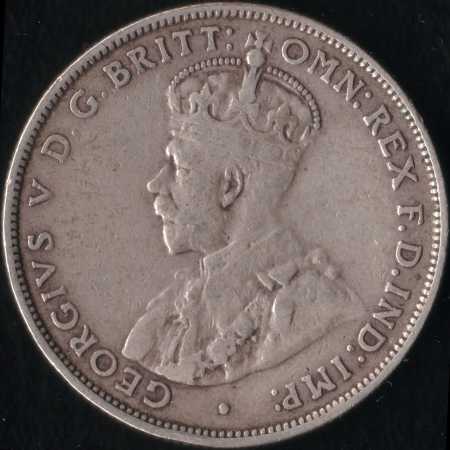 |
Genuine |
 |
Forgery |
 |
Genuine |
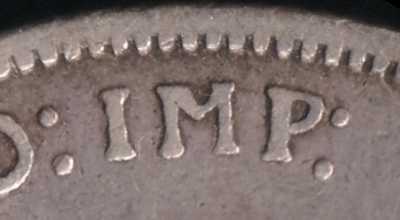 |
Forgery |
|
|
This page is mostly complete but I'll add new information as
it comes to hand.
Well here is an update of sorts. Despite what I say in the
text below, I no longer believe that these counterfeits were the work of Manders
and Twible. For an explanation, see my article in the July 2004 issue of Australasian
Coin and Banknote magazine.
All of the information on this page comes from one of three sources:
High grade forgeries of florins were circulated in 1926, 1927, 1928 and 1931.
These spurious coins appear to have been struck rather than cast and had a silver
content similar to that of genuine florins. The clandestine mint of Twible and Manders
was in Redfern, an inner suburb of Sydney, and although its major product were the
counterfeit florins which comprise the subject of this article, it was also manufacturing
bogus shillings and sixpences.
A hint as to why this was a profitable venture comes from another of the stories
in Kelly's book. In the early thirties, after Twible and Manders were safely incarcerated,
Frank Fahy was given the task of breaking a counterfeit ring responsible for a surfeit
of shillings. At the time, an ounce of silver was worth about 1/6. Given that a
shilling weighed a fifth of an ounce and contained 7.5% copper, two ounces of silver
costing 3/- would be very nearly enough to make eleven shillings (11/-). Even allowing
for the cost of production and distribution, the profit margin was substantial.
It turned out that the spurious shillings were being produced in Hong Kong or
China and were of such high quality as to be quite undetectable. It may well be
that readers of this article have shillings in their possession bearing dates from
the early thirties which were never produced in Melbourne.
Returning to the Twible-Manders escapade, the florins I have seen bear no trace
of having been cast. They all lack the bubbled surface typical of cast objects.
Although none of the specimens I have seen would grade higher than Fine, if the
coins had been cast then I would expect to see evidence thereof in the highly protected
fields such as the interior of the letters. Furthermore, casting is extremely slow
and it would have taken a very long time to produce the £11,000 worth of florins
that the pair is suspected of putting into circulation. However, in the text and
the illustrations there is mention of crucibles and moulds and no hint of dies or
a coining press. This is a bit of a mystery to me. Kelly devotes much more space
to the activities and apprehension of Twible and it seems that Twible was operating
for much longer than Manders. The crucibles and moulds were found in a raid on Twible's
premises so it may have been that Manders and Twible were striking florins in a
press when they were in partnership but that Twible's solo operations were with
cast forgeries. There is the vaguest hint in the book that such was the case for
Kelly mentions that Fahy had acquired the knack of detecting bogus florins by touch.
There is yet another possibility. Maybe the moulds were used for making blanks
which were then struck into "coins" and maybe Kelly simply omits mention
of the coining equipment. This would explain the presence of the moulds in Twible's
premises and the struck appearance of the coins themselves. There are two problems
with this hypothesis. Although perhaps quicker than for the preparation of coins,
the casting process would still be tediously slow, and it is doubtful that struck
forgeries could be detected by touch. This is definitely a subject for further research.
The following illustrations are of the counterfeit florins produced by Twible
and Manders along with images of genuine coins of roughly the same grade.
|
A genuine 1928 florin and a counterfeit one in roughly the same condition. The differences
are hard to spot. The obverses have the same number of rim beads but the alignment
of the letters is slightly different. On the counterfeit coin the point of George
V's beard is a little more pronounced than on the genuine coin. Nevertheless, the
obverse on the counterfeit coin is very difficult to distinguish from that on the
genuine one. | ||||
|
On the genuine coin, the stem of the P and the following colon are both aligned
with gaps between rim bead. On the forgeries, the stem of the P and the colon are
aligned with beads. Also, the lower dot of the colon is below the baseline of the
letters. |
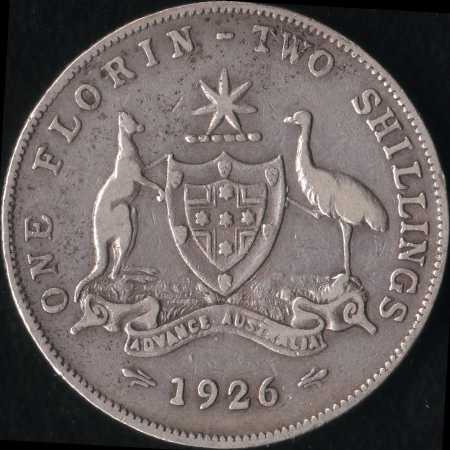 |
1926 |
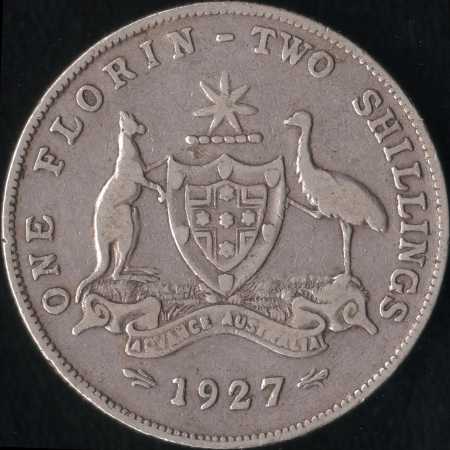 |
1927 |
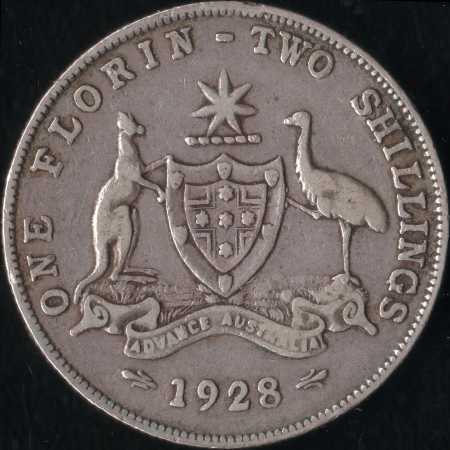 |
1928 |
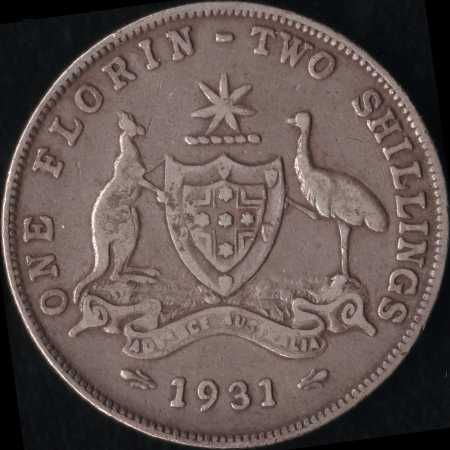 |
1931 |
The following pictures illustrate the differences between the genuine and counterfeit
reverses. With the exception of the dates, the following pictures are all of the
1928 florins.
|
On the genuine coin, the second leg of the H and the first I of SHILLINGS point
gaps between rim beads. On the forgery they point at beads. Furthermore, on the
forgery the first L leans further to the right than the one on the genuine coin. | ||||
|
On the counterfeit coins, the arch of the scroll is closer to the tip of the shield
than on the genuine coins. | ||||
|
The kangaroo on the counterfeit florins has a more rounded back than the one on
the genuine coins. Also, the kangaroo's feet are more horizontal than those on the
coins from the Melbourne Mint. | ||||
|
The emu's leg supporting the shield is somewhat thicker on the counterfeit coins
than on the genuine ones. | ||||
|
The upper quadrants on the inner shield are smaller on the counterfeit coins than
on the genuine ones. Overall, the shield is a slightly different shape, straighter
betwen the arms of the kangaroo, and more curved above the emu's foot. | ||||
|
On genuine coins the 19 leans right but on the counterfeits the 19 is more upright
and the 1 is less well-formed. On the genuine coin the 6 leans slightly to the left
but on the counterfeit it leans slightly to the right. | ||||
|
As for the1926 issues, on genuine coins the 19 leans right but on the counterfeits
the 19 is more upright and the 1 is less well-formed. Unlike the 1926 coins, the
final digit of the date is similarly aligned on both genuine and counterfeit coins. | ||||
|
Same remarks for the 19 as in prior examples but here on the counterfeit florin
the 8 is somewhat lower than on the genuine coin. Clarke mentions a "large
8 in-line" variety. It is just conceivable that he was looking at the forgery. | ||||
|
Same remarks as above for the 19 but the 31 shows significant differences also.
On the forgery the 3 leans more to the left and the final 1 is more upright than
the corresponding digits on the genuine coin. |